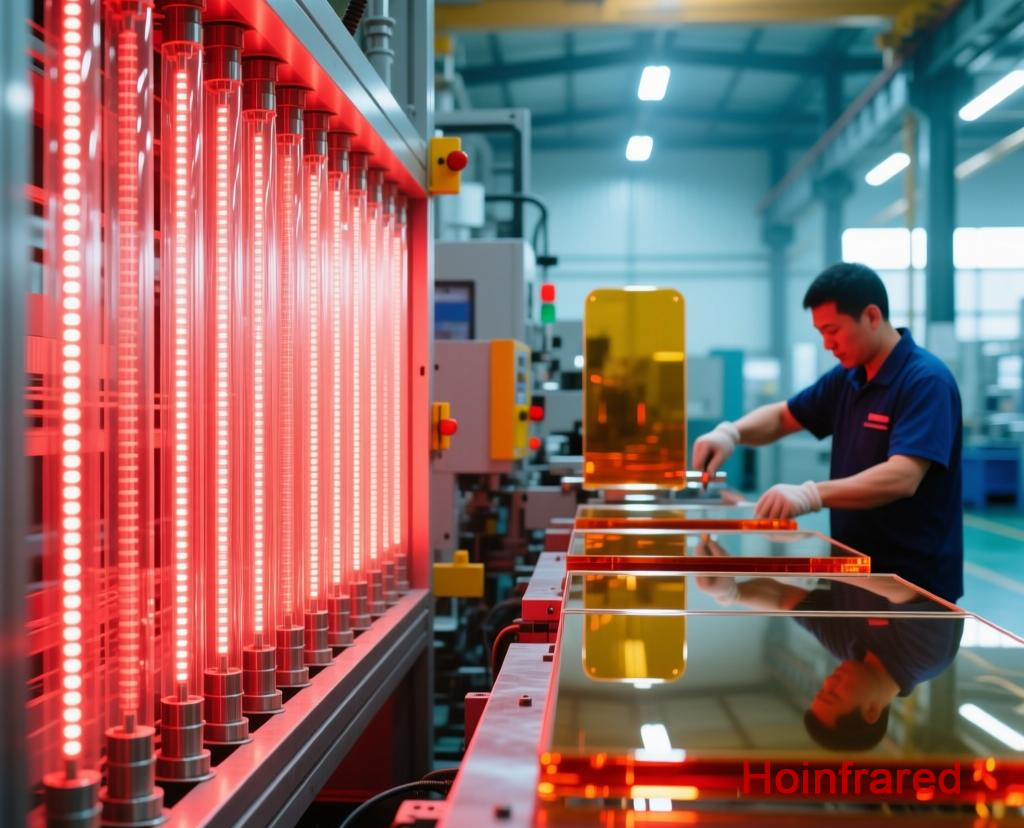
Case 1: Glass Coating Curing, Enhancing Efficiency and Quality
A manufacturer of architectural glass mainly produces Low-E coated glass for high-end building curtain walls. Previously, it used traditional hot air heating for curing after coating, which had problems such as slow heating speed, high energy consumption, and unstable adhesion of the coating layer, restricting the improvement of production efficiency and product quality.
The situation was significantly improved after the introduction of infrared heating tubes. According to the characteristics of the coating material, medium-wave infrared heating tubes with specific wavelengths were selected. Once the tubes were activated, they could rapidly and precisely radiate energy to the coating layer, making the molecules in the layer become active quickly and achieve rapid curing from the inside out. The heating time was greatly reduced from 15-20 minutes per piece of glass to 5-8 minutes, increasing production efficiency by at least 50%. Moreover, due to the uniform heating of infrared rays, the curing of the coating layer was more consistent. The adhesion test results showed that the adhesion of the coating layer increased by 30%, effectively reducing the risk of de-coating during transportation and installation. The product yield rate rose from 80% to over 90%. At the same time, the energy consumption of the infrared heating tubes was 35% lower than that of traditional hot air equipment, significantly reducing production costs and enhancing the market competitiveness of the products.
Case 2: Glass Hot Bending Forming, Achieving Precise Processing
A company specializing in automotive glass production encountered difficulties in the hot bending forming process of irregularly shaped automotive glass. Traditional heating methods were unable to achieve rapid and precise local heating of the glass, resulting in uneven heating and problems such as deformation and cracking during the hot bending process. The scrap rate was as high as 20%, and the production efficiency was low, making it difficult to meet the growing market demand.
This enterprise has adopted a short-wave infrared heating lamp tube solution. Through a carefully designed lamp tube layout and an intelligent temperature control system, short-wave infrared rays can precisely focus on the areas of the glass that need to be heat-bent, quickly heating the glass in that area to the softening point (approximately 650-700℃). Due to the rapid heating of short-wave infrared rays (reaching a high power output within 1-3 seconds), the thermal response speed is more than five times faster than traditional heating methods. Combined with high-precision molds, it can achieve precise heat-bending of complex-shaped glass. The heat-bending time has been reduced from 8-10 minutes per piece to 3-5 minutes, significantly increasing production efficiency. Moreover, the uniformity of glass heating has been significantly improved, with the scrap rate reduced to within 8%, effectively enhancing product quality and production efficiency, and meeting the demands of automotive manufacturers for high-quality and diverse automotive glass.
Gold-plated infrared heating lamp are made by vapor deposition of thin film materials outside the wall of the tube to be added in a vacuum environment through v......
1000w 600mm carbon fiber infrared heating lamp for car paint drying room...